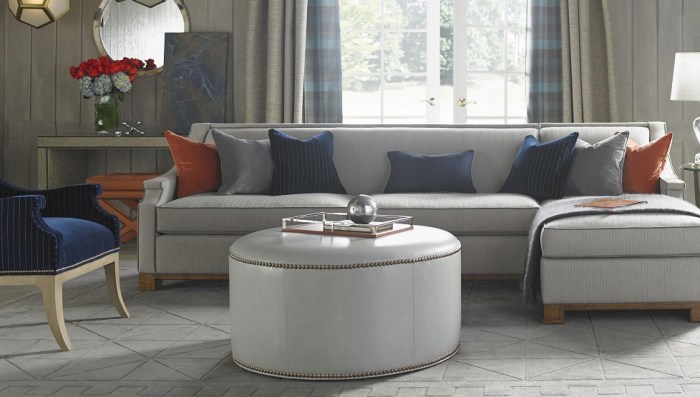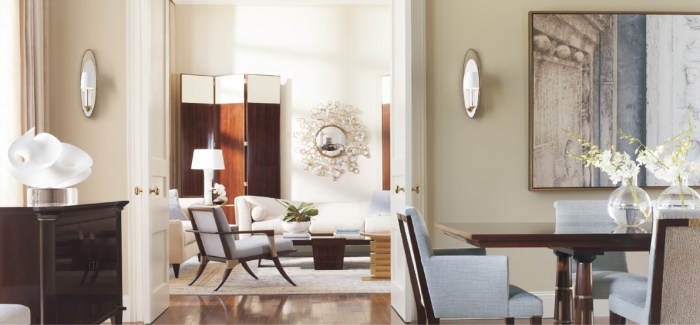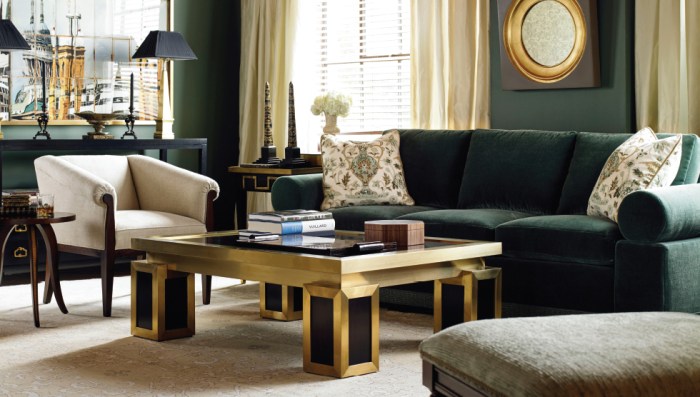Embark on a journey into the captivating world of Sheffield furniture, where elegance, craftsmanship, and heritage intertwine. From its humble beginnings to its enduring legacy, Sheffield furniture has left an indelible mark on the world of design.
Over centuries, Sheffield furniture makers have honed their skills, creating pieces that are not only aesthetically pleasing but also built to last. From the finest mahogany to intricate marquetry, each piece showcases the exceptional artistry and dedication of its creators.
Sheffield Furniture History
The origins of Sheffield furniture can be traced back to the 17th century, when the city was a major center for metalworking. Sheffield craftsmen used their skills in metalworking to create furniture that was both beautiful and durable.
One of the most distinctive features of Sheffield furniture is its use of inlays. Inlays are pieces of wood, metal, or other materials that are inserted into the surface of the furniture. Inlays were often used to create intricate designs, and they added a touch of luxury to Sheffield furniture.
Timeline of Significant Events in Sheffield Furniture History
- 1674: The first Sheffield furniture makers are recorded.
- 1720: Sheffield furniture makers begin to use inlays.
- 1750: Sheffield furniture becomes popular throughout England.
- 1800: Sheffield furniture makers begin to use steam power.
- 1851: Sheffield furniture is exhibited at the Great Exhibition in London.
Factors that Influenced the Unique Style of Sheffield Furniture
The unique style of Sheffield furniture was influenced by a number of factors, including:
- The availability of skilled metalworkers.
- The use of inlays.
- The influence of the Arts and Crafts Movement.
Characteristics of Sheffield Furniture

Sheffield furniture is renowned for its distinctive features that set it apart from other furniture styles. These characteristics include the use of premium materials, exceptional craftsmanship, and intricate designs.
Materials Used in Sheffield Furniture
Sheffield furniture makers primarily used high-quality materials such as mahogany, oak, and rosewood. Mahogany was a popular choice due to its rich color and durability. Oak was known for its strength and resistance to warping. Rosewood, with its exotic appearance and distinctive grain, was often used for decorative accents and inlays.
Sheffield furniture is known for its exceptional quality and craftsmanship. For a wide selection of bedroom furniture, consider exploring the offerings of raymour and flanigan bedroom furniture . Their collection boasts a diverse range of styles, from classic to contemporary, ensuring you find the perfect pieces to complement your bedroom décor.
Whether you prefer solid wood, upholstered headboards, or sleek metal frames, Raymour and Flanigan has something to suit every taste and budget. Don’t miss out on the opportunity to enhance your bedroom with their exquisite furniture offerings, while still maintaining the timeless elegance of Sheffield furniture.
Craftsmanship and Techniques
Sheffield furniture makers employed skilled craftsmanship and techniques to create pieces that were both beautiful and functional. They used dovetail joints for drawers and cabinets, ensuring durability and longevity. Inlays and marquetry were commonly used to add intricate designs and embellishments.
The use of veneers allowed for the creation of complex patterns and the efficient use of rare and expensive woods.
Design Elements
Sheffield furniture often incorporated elegant and sophisticated design elements. Cabriole legs, characterized by their curved shape, were a common feature. Upholstered pieces were typically adorned with rich fabrics and intricate carvings. The use of brass and silver hardware added a touch of luxury and refinement.
Conclusion
The distinctive characteristics of Sheffield furniture, including the use of premium materials, exceptional craftsmanship, and intricate designs, have made it a highly sought-after style for centuries. Its timeless appeal and enduring quality continue to captivate furniture enthusiasts worldwide.
Sheffield Furniture Styles
Sheffield furniture encompasses a diverse range of styles, each with its unique characteristics. These styles have evolved over time, influenced by various design movements and cultural trends.
Let’s explore the different styles of Sheffield furniture, highlighting their distinctive features and notable examples:
Georgian Style
- Characterized by clean lines, symmetry, and elegant proportions.
- Features mahogany or walnut veneers, with intricate inlay work and carved details.
- Examples: Chippendale-style chairs, Sheraton-style sideboards.
Regency Style
- A transition between Georgian and Victorian styles, known for its lightness and grace.
- Incorporates curved lines, floral motifs, and brass or bronze accents.
- Examples: Regency-style sofa with curved arms, Regency-style chairs with lyre-shaped backs.
Victorian Style
- Marked by elaborate ornamentation, rich colors, and heavy construction.
- Features carved woodwork, velvet upholstery, and intricate marquetry.
- Examples: Victorian-style chaise longue, Victorian-style dining chairs with high backs.
Edwardian Style
- A return to simpler forms, inspired by the Arts and Crafts movement.
- Characterized by straight lines, clean surfaces, and natural materials such as oak and mahogany.
- Examples: Edwardian-style armchair with square arms, Edwardian-style sideboard with geometric patterns.
Art Deco Style
- Emerged in the 1920s, known for its geometric forms, bold colors, and luxurious materials.
- Features lacquered surfaces, chrome accents, and streamlined silhouettes.
- Examples: Art Deco-style cocktail cabinet, Art Deco-style dressing table with mirrored panels.
Mid-Century Modern Style
- A post-World War II style that emphasized functionality, simplicity, and organic forms.
- Characterized by clean lines, tapered legs, and the use of natural materials such as teak and rosewood.
- Examples: Mid-century modern-style armchair with curved back, Mid-century modern-style coffee table with sculptural base.
Sheffield Furniture Makers
Sheffield’s furniture industry thrived due to the contributions of skilled craftsmen and renowned furniture makers. These individuals played a pivotal role in shaping the city’s furniture-making legacy.
Notable Furniture Makers
- Thomas Chippendale (1718-1779):Known for his exquisite rococo and neoclassical designs, Chippendale established a workshop in Sheffield in 1754. His pieces, characterized by intricate carving and elegant lines, became highly sought after by the aristocracy.
- George Hepplewhite (1727-1786):A contemporary of Chippendale, Hepplewhite’s furniture exhibited a more delicate and refined style. His designs, influenced by French rococo, featured graceful curves, oval shapes, and satinwood inlay.
- Thomas Sheraton (1751-1806):Sheraton’s furniture was known for its elegant simplicity and neoclassical motifs. He incorporated delicate inlay, reeded legs, and geometric shapes into his designs.
- Gillows of Lancaster and London (1738-1840):Gillows was a prominent furniture-making firm that established a branch in Sheffield in 1788. Their pieces, characterized by high-quality craftsmanship and mahogany construction, were favored by the wealthy and influential.
- Benjamin Gill (1769-1844):Gill was a skilled cabinetmaker who specialized in mahogany furniture. His pieces, often featuring intricate carving and marquetry, were highly prized by collectors.
Sheffield Furniture Industry

The Sheffield furniture industry has a long and illustrious history, dating back to the 17th century. The city’s furniture makers were renowned for their craftsmanship and innovation, and their products were exported all over the world.The Sheffield furniture industry reached its peak in the 19th century, when the city became a major center for the production of high-quality furniture.
Sheffield furniture is renowned for its quality and craftsmanship. If you’re in need of furniture removal services, consider same day furniture removal . They offer quick and efficient furniture removal, ensuring a seamless transition. Whether you’re moving or simply decluttering, their services can help you keep your Sheffield furniture in pristine condition.
The industry employed thousands of workers and generated millions of pounds in revenue. However, the industry declined in the 20th century, as production moved to other countries with lower labor costs.
Sheffield furniture is well-known for its durability and style. If you’re looking for a way to protect your Sheffield furniture from the elements, consider investing in custom garden furniture covers . These covers are made from high-quality materials that will protect your furniture from rain, snow, and UV rays.
They’re also easy to clean and maintain, so you can keep your furniture looking its best for years to come.
Economic Impact
The Sheffield furniture industry had a significant economic impact on the city. It provided employment for thousands of people and generated millions of pounds in revenue. The industry also helped to develop the city’s infrastructure, including its transportation system and housing stock.
Social Impact
The Sheffield furniture industry also had a significant social impact on the city. It created a sense of community among the furniture makers and their families. The industry also helped to shape the city’s culture and identity.
Factors Contributing to Success, Sheffield furniture
There were a number of factors that contributed to the success of the Sheffield furniture industry. These included:
- The city’s skilled workforce
- The availability of high-quality raw materials
- The city’s central location
- The government’s support for the industry
Challenges and Opportunities
The Sheffield furniture industry faces a number of challenges today. These include:
- Competition from other countries with lower labor costs
- The rising cost of raw materials
- The changing tastes of consumers
However, the industry also has a number of opportunities. These include:
- The growing demand for high-quality furniture
- The development of new technologies
- The government’s support for the industry
Sheffield Furniture in Modern Interiors

Sheffield furniture has found a niche in contemporary interior design, blending traditional craftsmanship with modern aesthetics. Its timeless designs and durability make it an enduring choice for discerning homeowners seeking a sophisticated and elegant touch.
The clean lines and geometric shapes of modern interiors complement the classic silhouettes of Sheffield furniture. In living rooms, Chesterfield sofas upholstered in sumptuous fabrics create a cozy and inviting atmosphere. In dining rooms, mahogany dining tables with intricate carvings add a touch of grandeur to gatherings.
Incorporation into Interior Styles
- Minimalist:Sheffield’s simple lines and neutral hues seamlessly integrate into minimalist interiors, adding a touch of warmth and sophistication.
- Mid-Century Modern:The clean lines and tapered legs of Sheffield furniture echo the aesthetic of mid-century modern design, creating a cohesive and stylish look.
- Scandinavian:Sheffield’s natural wood tones and functional design blend harmoniously with Scandinavian interiors, enhancing the sense of comfort and tranquility.
Trends and Influences
The use of Sheffield furniture in modern interiors is influenced by several trends:
- Sustainability:The durability and longevity of Sheffield furniture align with the growing emphasis on sustainability in interior design.
- Craftsmanship:The intricate carvings and fine joinery of Sheffield furniture showcase the skill and artistry of traditional craftsmanship, appealing to those seeking unique and well-made pieces.
- Timelessness:Sheffield furniture’s classic designs transcend fleeting trends, ensuring its relevance and appeal in ever-changing interior styles.
Final Wrap-Up
Today, Sheffield furniture continues to captivate collectors and interior designers alike. Its timeless appeal and enduring quality make it a sought-after addition to any discerning home. Whether it’s a grand dining table or an intimate writing desk, Sheffield furniture adds a touch of sophistication and warmth to any space.
Expert Answers
What are the defining characteristics of Sheffield furniture?
Sheffield furniture is known for its elegant lines, rich finishes, and intricate details. It is often made from high-quality materials such as mahogany, oak, and rosewood.
Who are some notable Sheffield furniture makers?
Some of the most famous Sheffield furniture makers include Thomas Chippendale, George Hepplewhite, and Robert Adam.
How can I incorporate Sheffield furniture into my modern home?
Sheffield furniture can be incorporated into modern homes in a variety of ways. For example, a classic mahogany dining table can be paired with contemporary chairs, or an antique writing desk can be used as a statement piece in a living room.